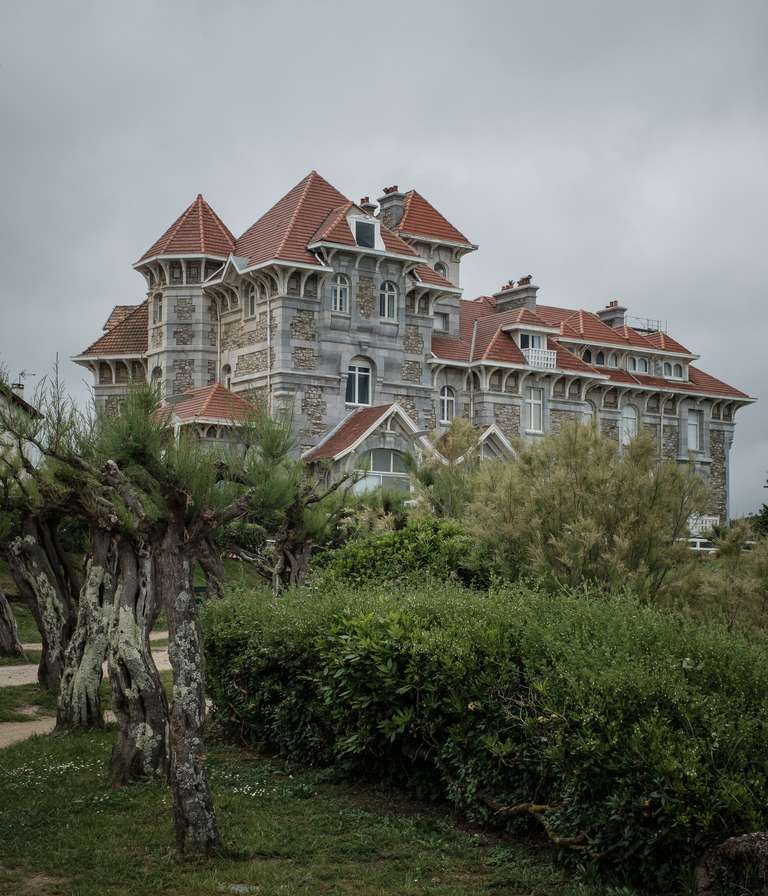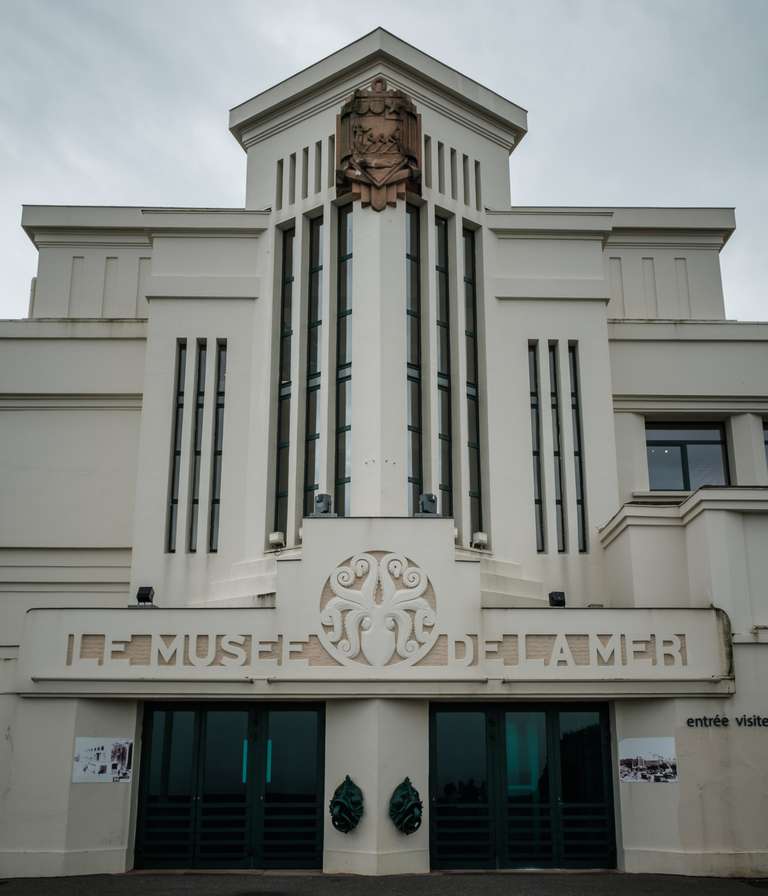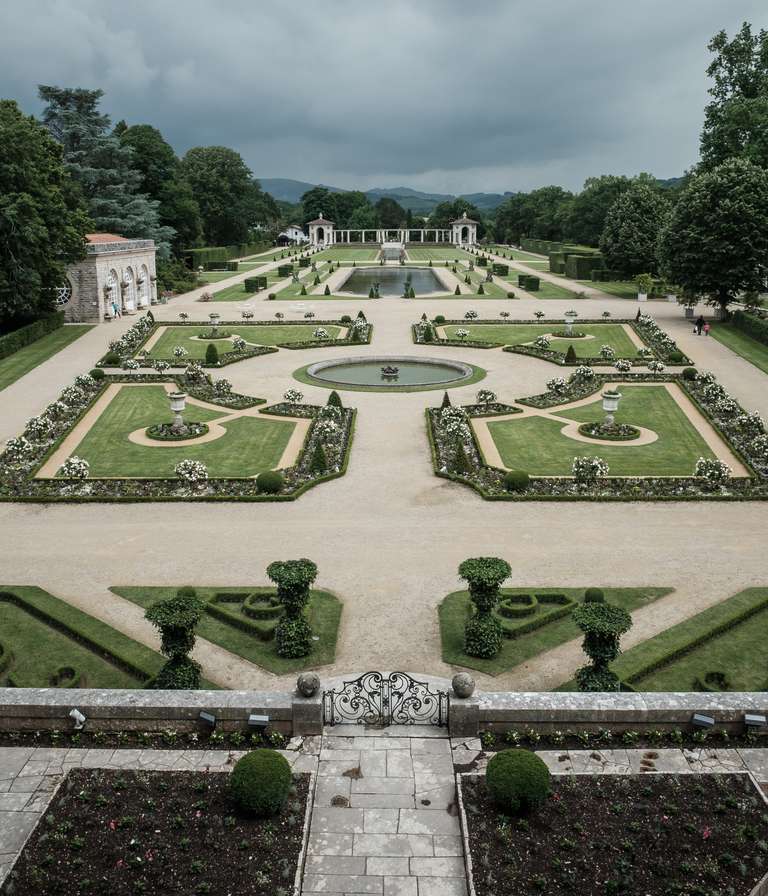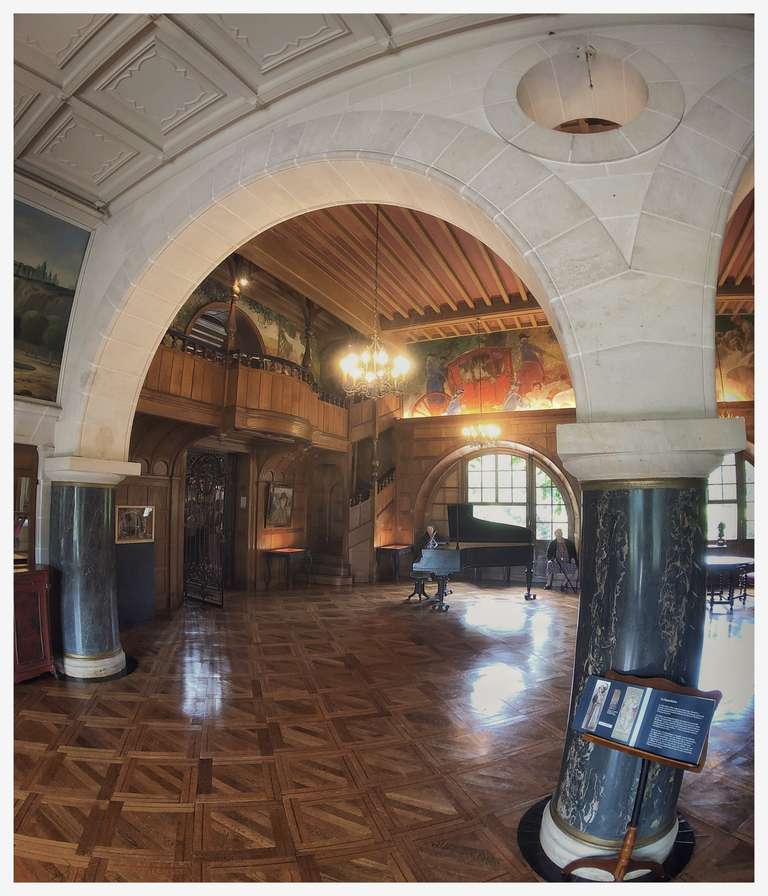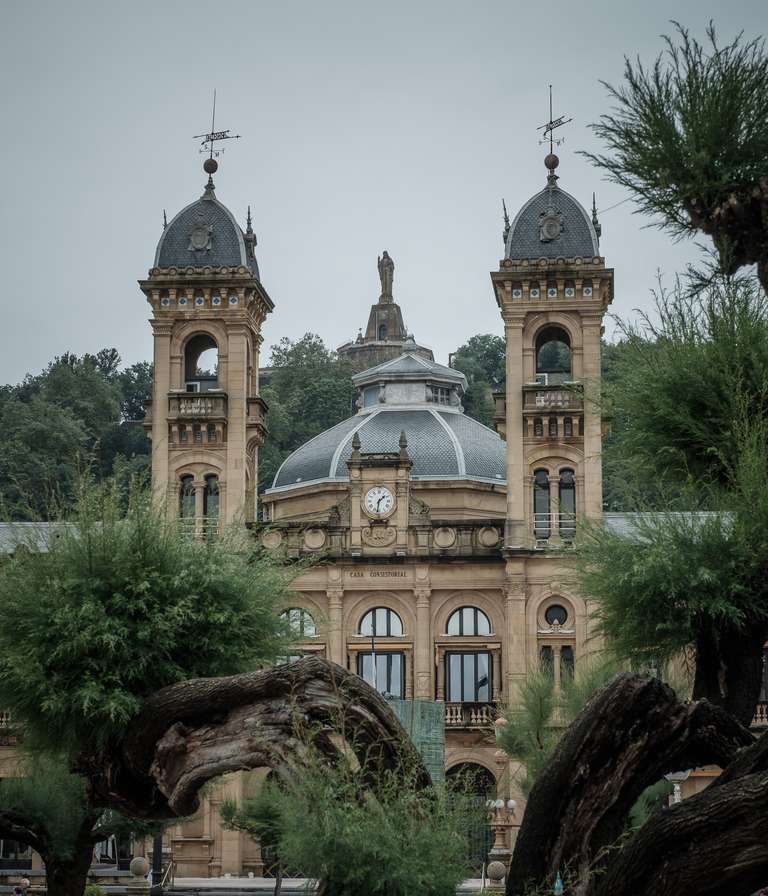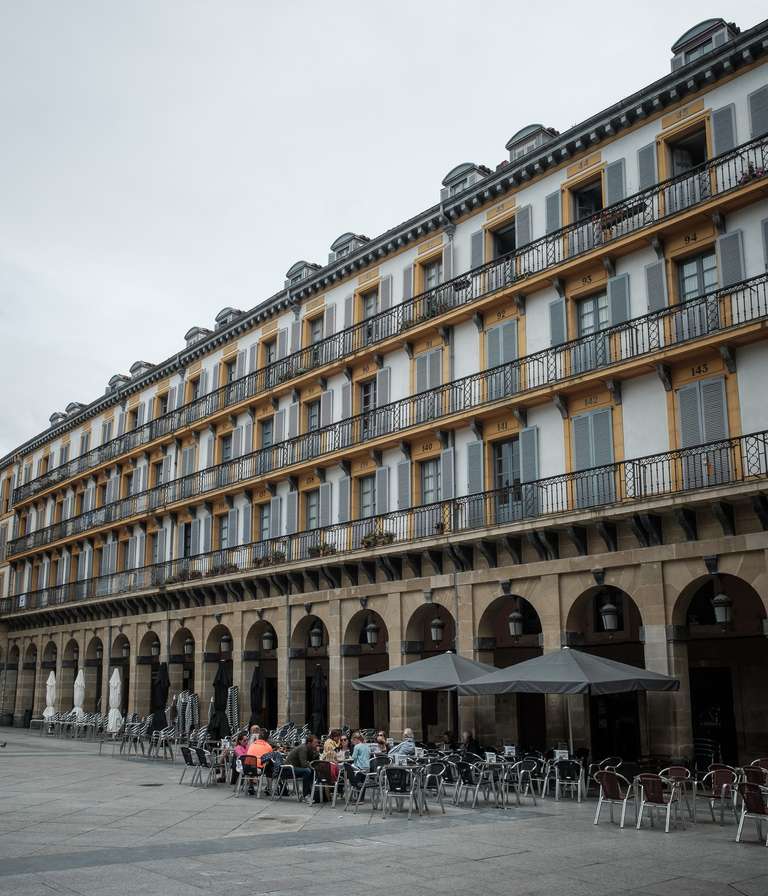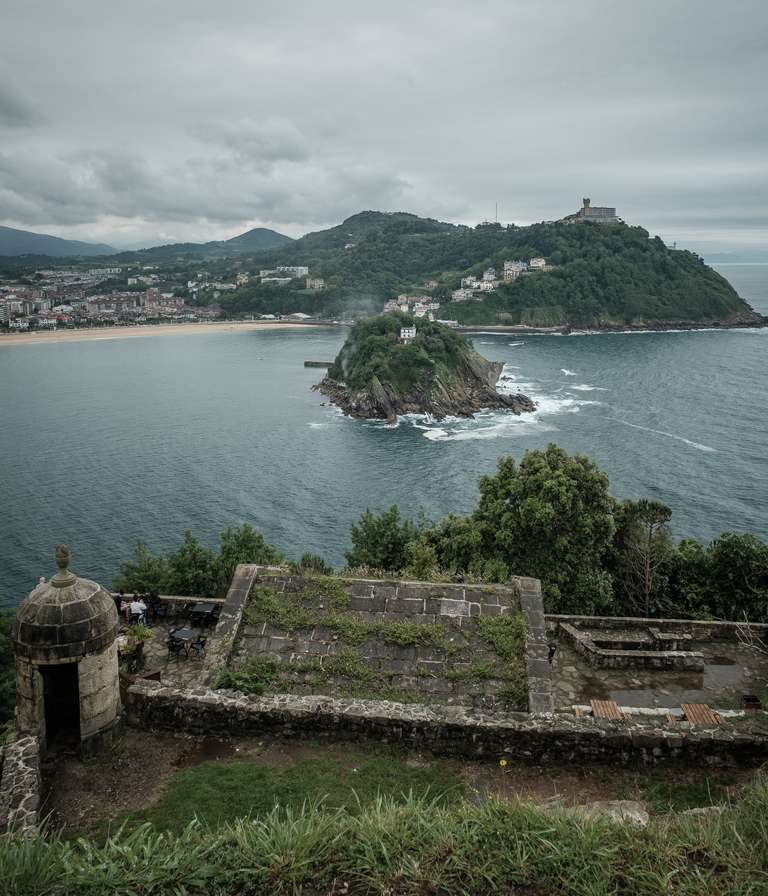Mountains and Sea (Basque country)
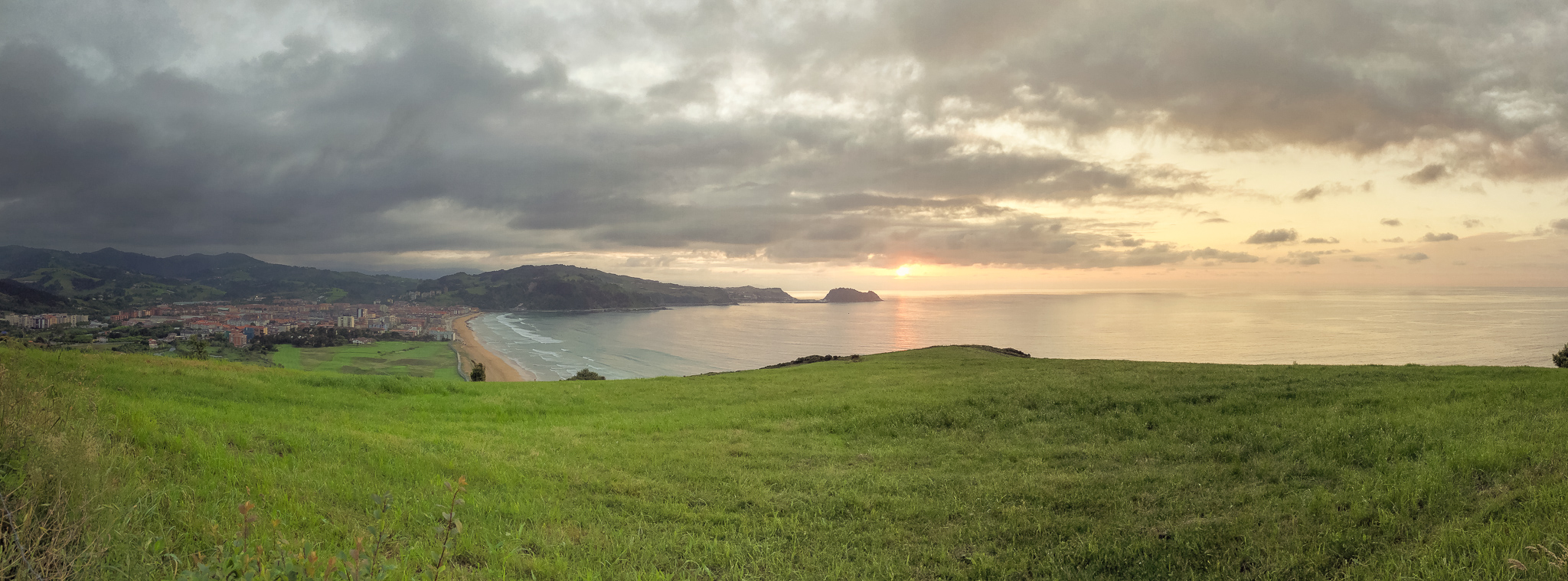
(2441 – 2860 km)
Once again the landscape changes. The Pyrenees mountains appear on the horizon as the sandy beach and dunes slowly disappear. The architecture differs from the Cote d'Argent. Red and green are the dominant colours. The Basque Country.
First, I settle for a car park in Anglet. It's not pretty, but it's in a good strategic position. I'm right on the large town beach with several sections in case of waves. But there is also a bus stop in front of the site to get to the surrounding towns.
The first day I head for Biarritz. After a fifteen-minute bus ride, I get off just after the entrance to the town and walk to the lighthouse at the northern end of the town. Here I find some villas from Biarritz's heyday as a beach resort during the Belle Epoque. Unfortunately, much modern development has taken place since then and many of the old buildings have been overbuilt or demolished for modern hotels. Luckily, there are still a few beautiful corners left.
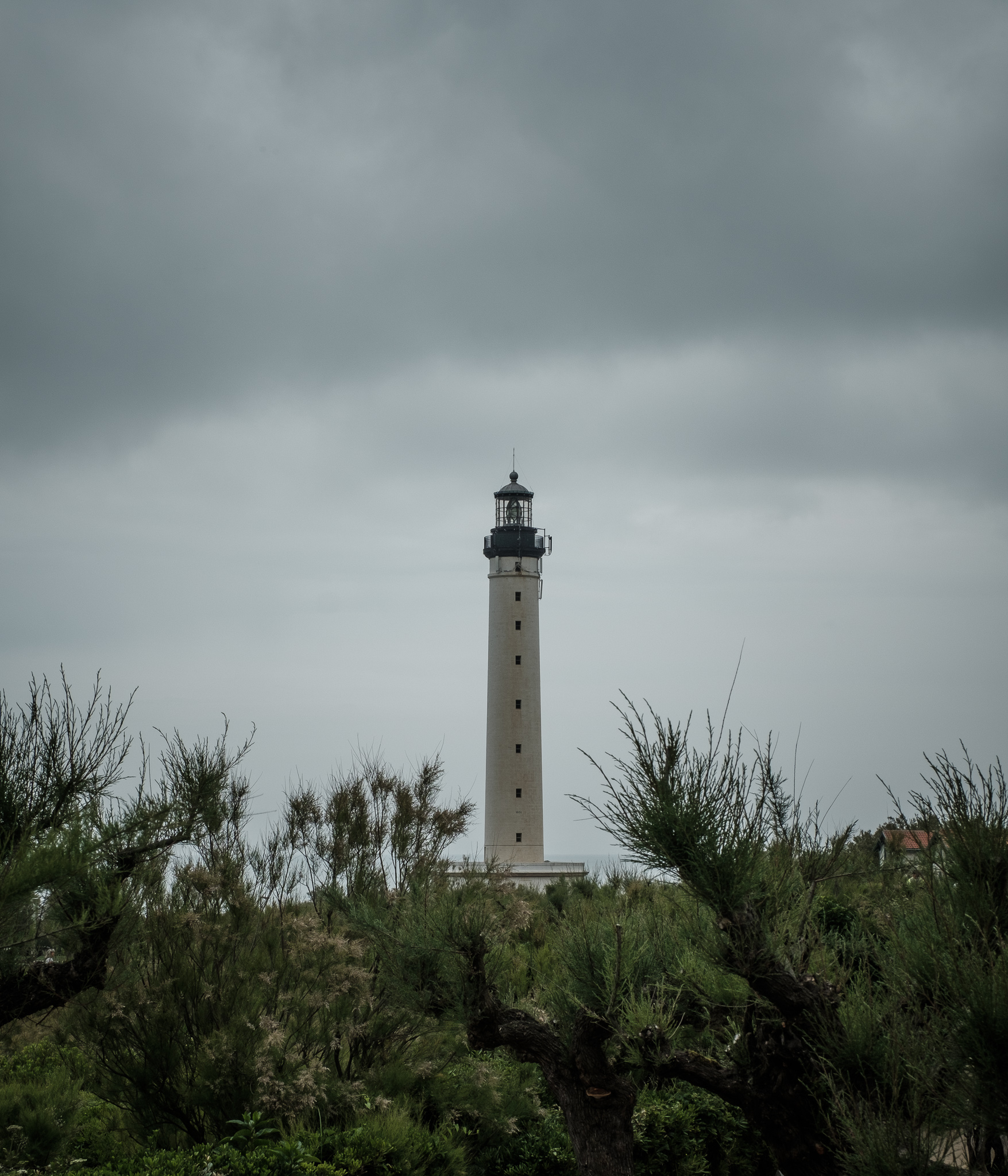
Unfortunately, the weather doesn't cooperate with the excursion. There are rain showers and short thunderstorms. I continue to Plage du Miramar and the neighbouring Grande Plage from the lighthouse. Here is the Hotel du Palais, Biarritz's face in reports and postcards, and the casino. There are also a few surfers who take advantage of their lunch break to catch a few waves. At Cape Rocher de la Vierge, I see the Pyrenees, distant and fogged, for the first time.

It's time for a stroll through the shopping district, with its many newly renovated houses, and then it's time for the bus back.
A thunderstorm hit overnight and continued to rain all morning. Around noon, the rain radar indicated that there would be no rain in the afternoon, so I took the bus to Bayonne. After a bus ride of forty-five minutes, I arrive right in the centre of Bayonne, at the bus station on the Place des Basques. From here it is only a few steps to the old town and the large cathedral of Bayonne, Sainte-Marie.

As the old town is a pedestrian zone, I can wander through the narrow streets between the old Basque-style buildings with all kinds of shops and end up on the banks of the Nive.
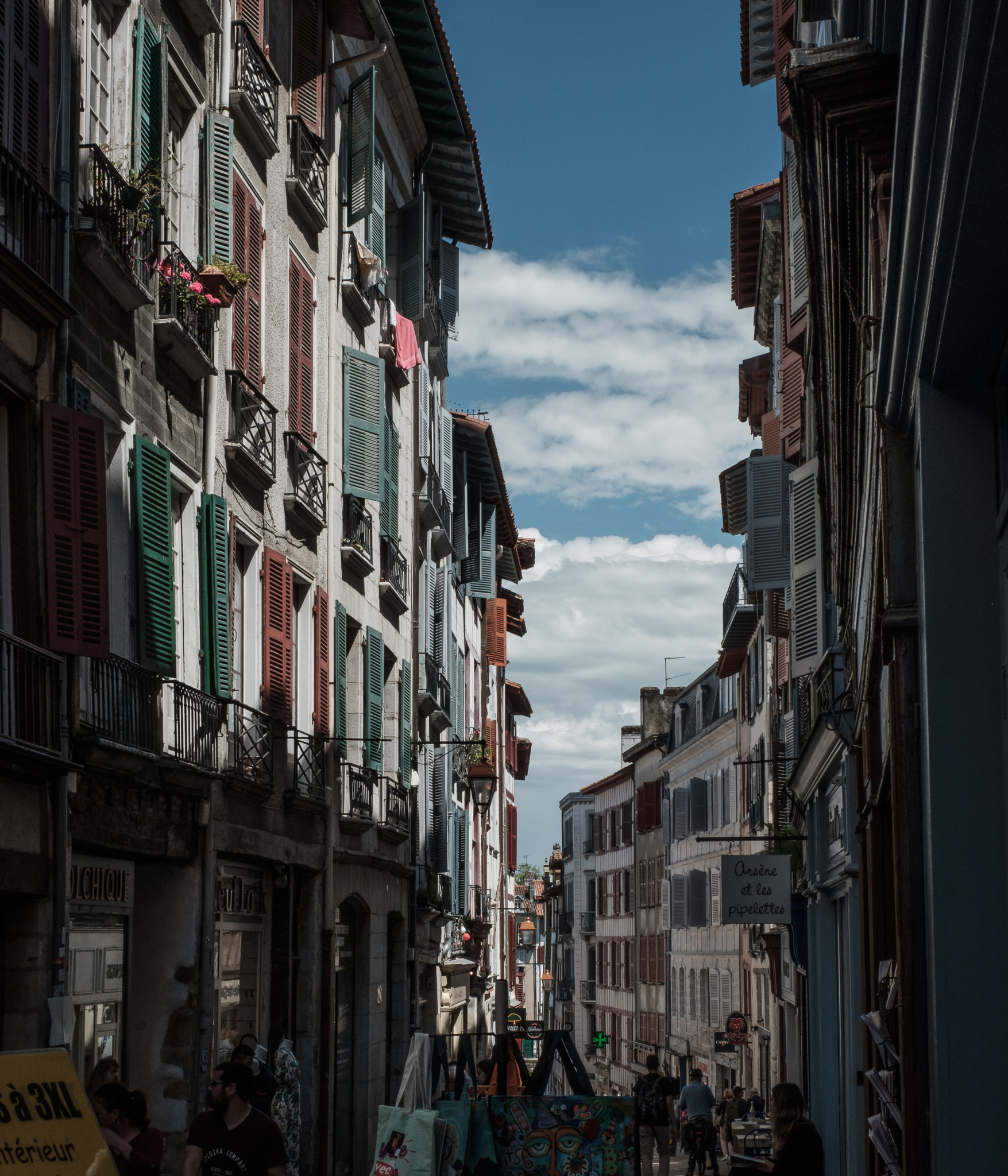
On the other side of the river is the Petit Bayonne district. Not as much renovation work has been done here as has been done on the other side of the river in the Grand Bayonne district. After a visit to the museum of Basque history, I head back across the river for a visit to the cathedral cloister just before the gates close.

The next stop on the French part of the Basque Country is Saint Jean du Luz. Unfortunately, stuck between the main road and the railway line, the campsite is completely full. I prefer to camp inland and find a lovely campsite at St Pee sur Neville at the foot of the Pyrenees. The site is ideal for taking the bus to Saint Jean du Luz and visiting some inland places.
Saint Jean du Luz is a small seaside resort with a number of historic buildings and a nice shopping street.

The next day I head inland. My first stop is the Sare cave. A huge cave in which even bats are buzzing around.

Unfortunately, due to fog on the mountain, the rack-railway trip to the top of the Rhûne at 905m has been cancelled. It is still possible to go up by train. However, to be fair, you will be informed of the visibility conditions at the ticket office.
Villa Arnaga, once owned by the French writer Edmond Rostand, is the last stop. Walking through a classic French park, I arrive at a large Basque-styled Villa. Inside is the Edmond Rostand Museum. The rooms of the villa are all furnished in the style of the period around 1900. They are decorated with objects from the writer's work for the theatre. Cyrano de Bergerac is his most famous character, and he is everywhere.

It's time to leave France for the Spanish part of the Basque Country. My first stop is San Sebastian. This is another seaside resort that made its name during the Belle Époque. I arrive at lunchtime and head straight for the old quarter to satisfy my hunger in one of the many pintxos bars with a range of delicious and varied snacks. Freshly fortified, I climb Mount Urgull at the end of La Concha Bay and enjoy the view over San Sebastian.

Back in the old town, I drift through the narrow streets and along the beach promenade.
It's not too late to continue to Zarrutz, one of Spain's most famous surfing beaches. The campsite is situated on top of a cliff and you can see the whole of the beach from here. The next day I went down the cliff and caught a few waves. And then I have to go back up to the top of the cliff. That takes almost as much energy as surfing.
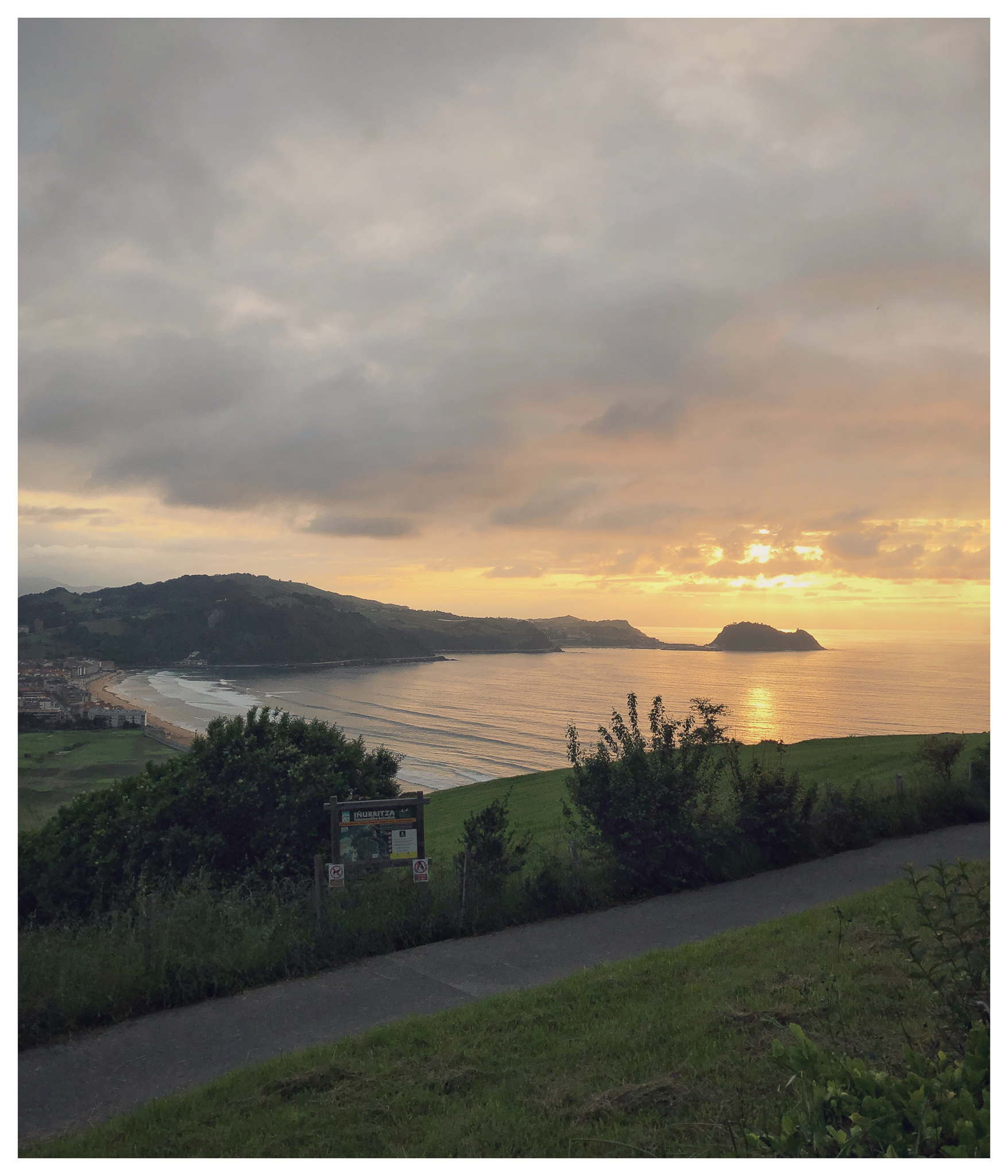
I leave the Basque Country via Bakio and make my next longer stop in San Vicente de la Barquera in Cantabria.
Viele Grüsse, Thomas
